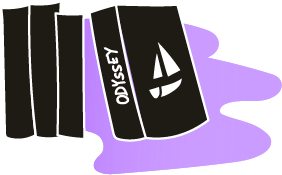Title of the resource
Title of the resource in english
Publisher
Wydawnictwo Naukowe Uniwersytetu Kardynała Stefana Wyszyńskiego
Original language
Target and Age Group
1st - 3rd grade of primary school/ 7-9 year olds
Author of the Entry:
Marta Pszczolińska, University of Warsaw, m.pszczolinska@al.uw.edu.pl
Peer-reviewer of the Entry:
Elżbieta Olechowska, University of Warsaw, elzbieta.olechowska@gmail.com
Second Peer-reviewer of the Entry:
Ayelet Peer, Bar- Ilan University, ayelet.peer@biu.ac.il
Beata Gaj
Beata Gaj is a classical and Polish philologist. A professor at the Cardinal Wyszyński University in Warsaw, she heads the Institute of Classical Philology and Culture Studies. Besides her scholarly work in the field of literary studies, Neo-Latin, ancient history, and her academic teaching, she also undertakes educational work with children and teenagers, having taught Latin at primary level 1-3 (7-9 years old).
Source: B. Gaj, Linguam Latinam Cognosco, Wydawnictwo Naukowe UKSW, Warszawa 2016
Contents & Purpose
The textbook is the first Latin course in Poland for children of the early grades of primary school applying American and British methods, such as drama, the Sherborne developmental movement or game-based learning. The author built upon her own experience of teaching Latin to primary students as extracurricular optional lessons. She aimed the course at bottom-up teaching of Latin while reinforcing the early stages of the educational process, including reading and writing in Polish; the diversity of vocabulary and grammatical forms in the two languages is recognized, and the course also develops creative thinking and sensitivity to culture (as described by the author herself, p. 6)
The course comprises 10 sections, which are divided into the material to be used by the pupils and essential information for the teacher. The textbook includes exercises pages, cutouts or board games. There is also a glossary, a progress test, a course completion certificate, a grammatical, mythological and literary bonus, as well as lyrics to Latin songs or words of Latin prayers. As it happens with pioneering projects, some very minor errors escaped the eye of the author or the editor; hopefully, the following editions will eliminate them. It has also been suggested that the content of the course could be less grammar oriented, especially for the benefit of Primary 1 students still unfamiliar with grammatical terminology.
References to Antiquity are embedded into the short texts (e.g., about Hercules at the crossroads), games (e.g. the 12 labours of Hercules), dramatic scenes (e.g., The Town Mouse and the Country Mouse according to Aesop, the kidnapping of Proserpina), exercises (e.g., Ariadna’s labyrinth) and the cultural texts (e.g., about the Roman gods) as well as, at the back of the textbook, the mythological and literary bonus material mentioned above. Besides Antiquity, the texts also refer to modern literary characters more familiar to the students, such as Winnie the Pooh or Harry Potter. The short texts and drama activities are accompanied by Polish translations below or next to the original text.


